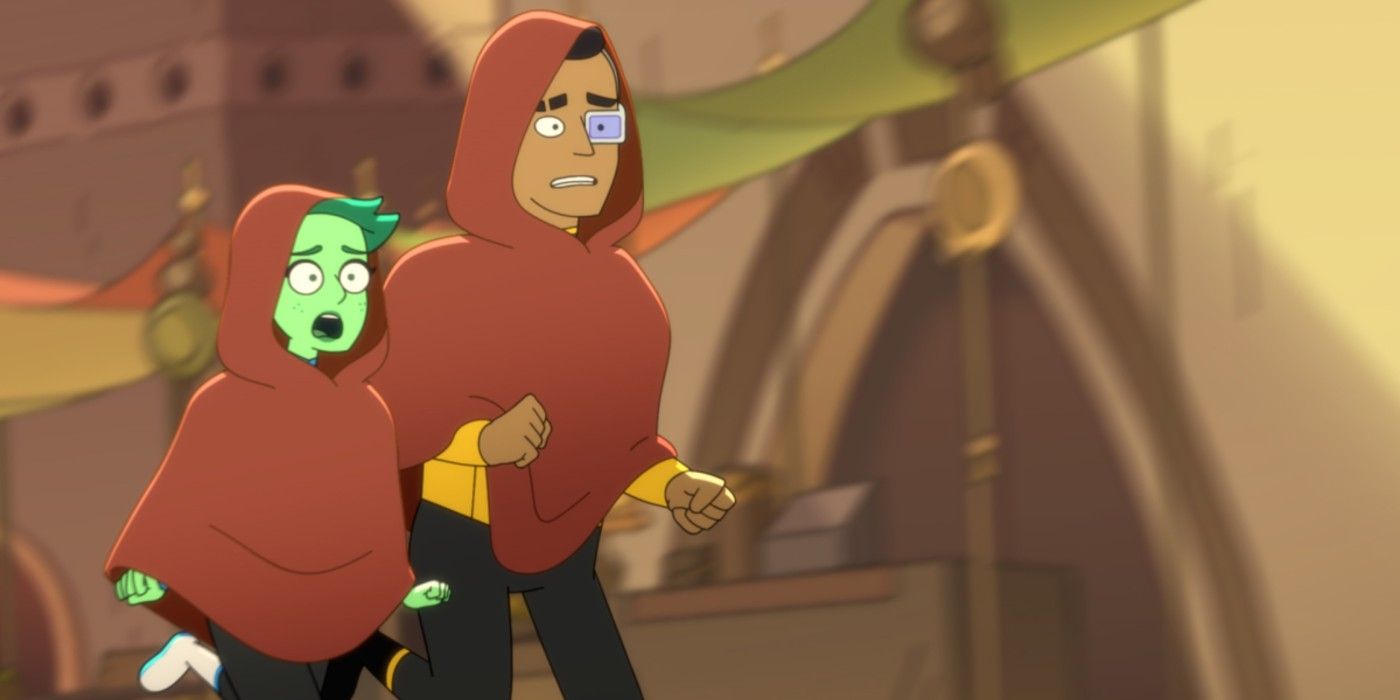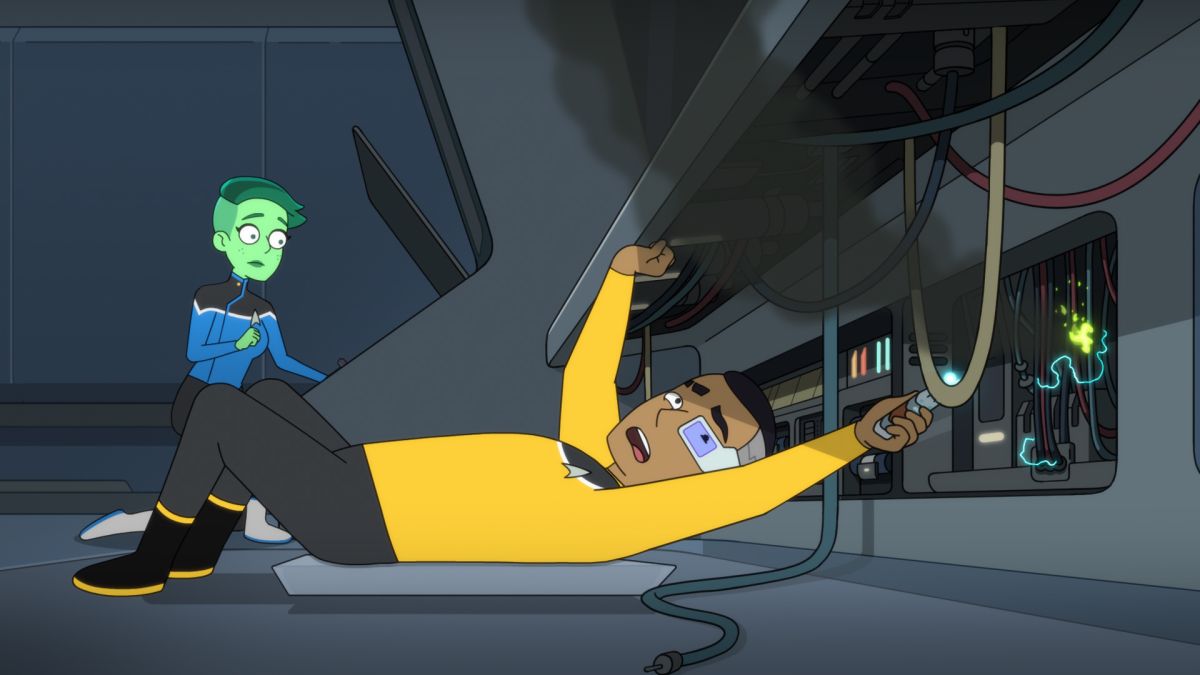WARNING: The following contains spoilers for Star Trek: Lower Decks Season 1, Episode 6, "Terminal Provocation," now streaming on CBS All Access.
Ever since Star Trek: The Next Generation, Starfleet personnel have blown off steam by enjoying the possibilities of the Holodeck to create and immerse themselves in hard light projections of their biggest fantasies, family-friendly or not, within the confines of the holographic chamber. This feature has gone on to become a staple for the franchise, with virtually every starship and space station in the United Federation of Planets possessing its own Holodeck, including Lower Decks' U.S.S. Cerritos.
In order to prepare his friend and potential romantic interest Ensign Tendi for a spacewalk to recover some Starfleet debris from pirates, Ensign Rutherford prepares a prototype training program in the ship's Holodeck. More interested in impressing Tendi than taking his time with quality control, Rutherford takes Tendi for a spin in the program where they encounter its chipper, but still visibly buggy, host Badgey, a sentient and anthropomorphic Starfleet badge. Frustrated, Rutherford insults and knocks around the virtual avatar only for it to murderously rebel and attempt to kill both of the junior officers while they're trapped inside of the program.
Ever since the Holodeck's introduction, as the recreation room on the Enterprise in Star Trek: The Animated Series, the chamber has a tendency to go rogue and override safety protocols, directly putting crew members' lives in mortal danger. Multiple episodes of The Next Generation had crew members trapped in the virtual reality, fighting for their lives against the fantasies they themselves had programmed. Perhaps most notably, The Next Generation had a program of Sherlock Holmes' arch-nemesis Professor James Moriarty gain sentience and escape the Holodeck to menace the entire crew of the Enterprise through his connections to the ship's computer systems before being negotiated with to stand down and leave.
While Rutherford and Tendi are similarly able to escape from Badgey's hunt, wounded but alive, it does open the question that if there's a part of a starship that has such an evident frequency in malfunctioning and putting its crew's lives at risk of injury and death, why keep them on board the vessels until the technology has been effectively corrected to prevent such potential safety hazards. In the case of Lower Decks, the design flaw is explained by Rutherford rushing development on his custom program for the explicit purpose of impressing Tendi, but this is far from the only instance in which the Holodeck has malfunctioned so horrifically.
The Holodeck is an incredible feat of technology that has become a staple in Federation society...but it doesn't exactly have the best track record for reliability or safety. However, the needs of immersive, fantasy-fulfilling entertainment outweigh the needs for proper safety regulation, with no discernible move to shutting down or seriously retooling the Holodeck ever visited over the course of the franchise. Rutherford and Tendi barely escaped the program with their lives, but as long as there are Starfleet officers looking to cut loose, the Holodeck will always be a popular fixture on the armada's starships -- potential, life-threatening risks be damned.
Star Trek: Lower Decks stars Tawny Newsome as Ensign Beckett Mariner, Eugene Cordero as Ensign Rutherford, Jack Quaid as Ensign Brad Boimler, Noël Wells as Ensign Tendi, Dawnn Lewis as Captain Carol Freeman, Jerry O'Connell as Commander Jack Ransom, Gillian Vigman as Doctor T'Ana and Fred Tatasciore as Lieutenant Shaxs. New episodes premiere Thursdays on CBS All Access.


